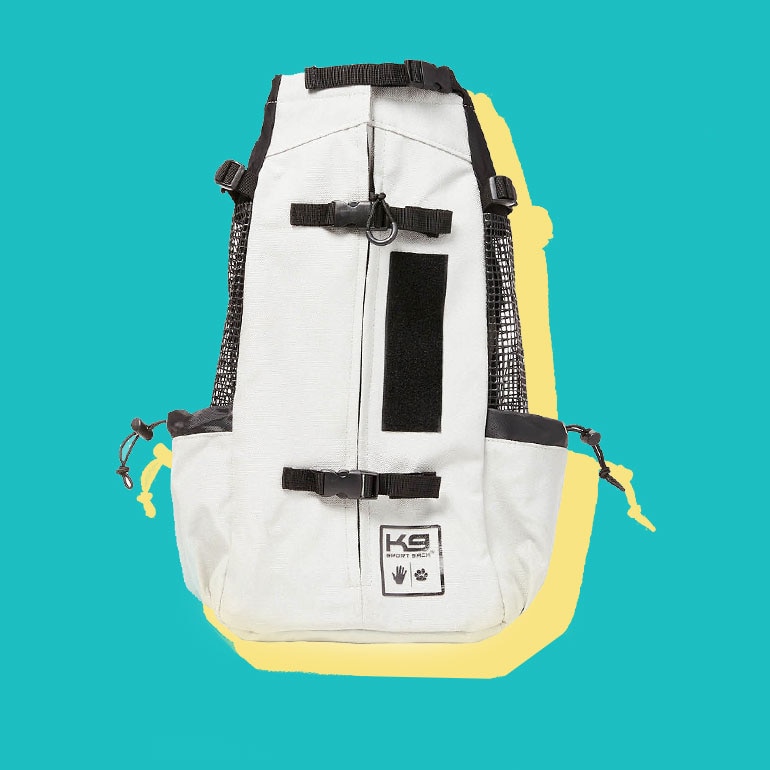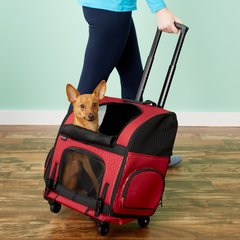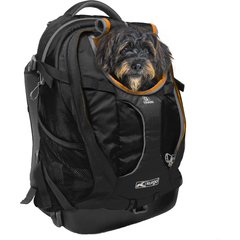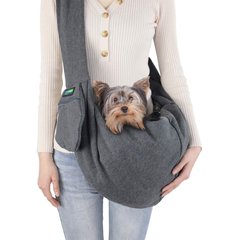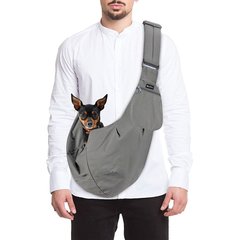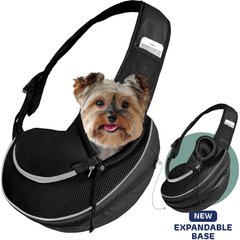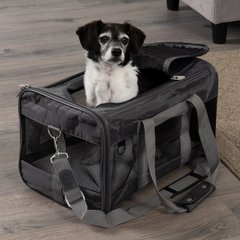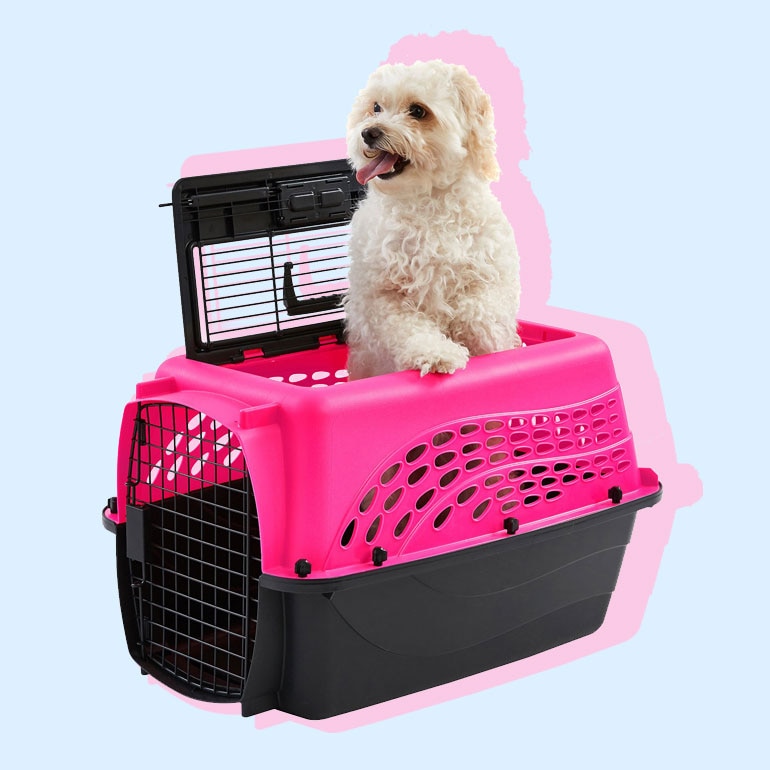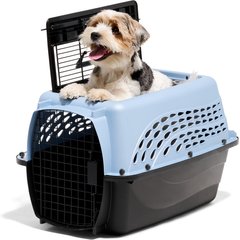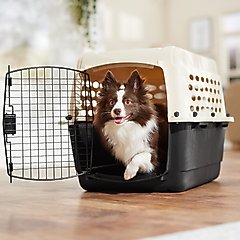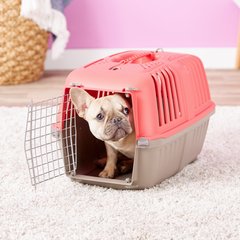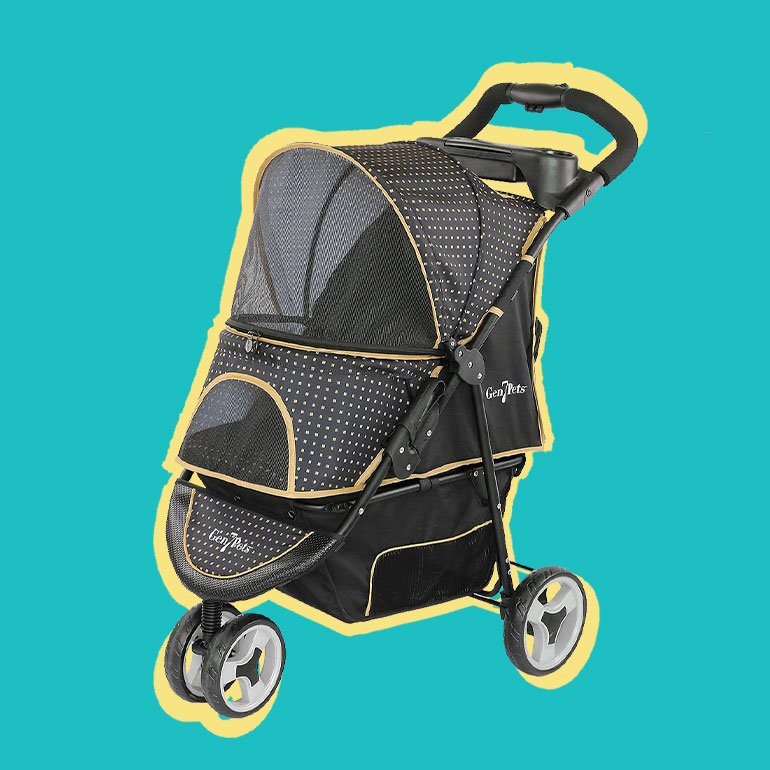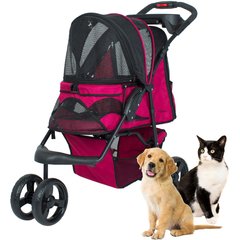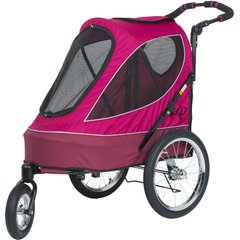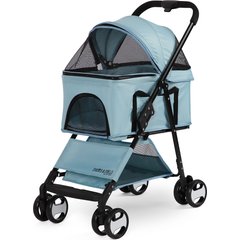How to Choose the Best Dog Carrier for Your Furry Family Member
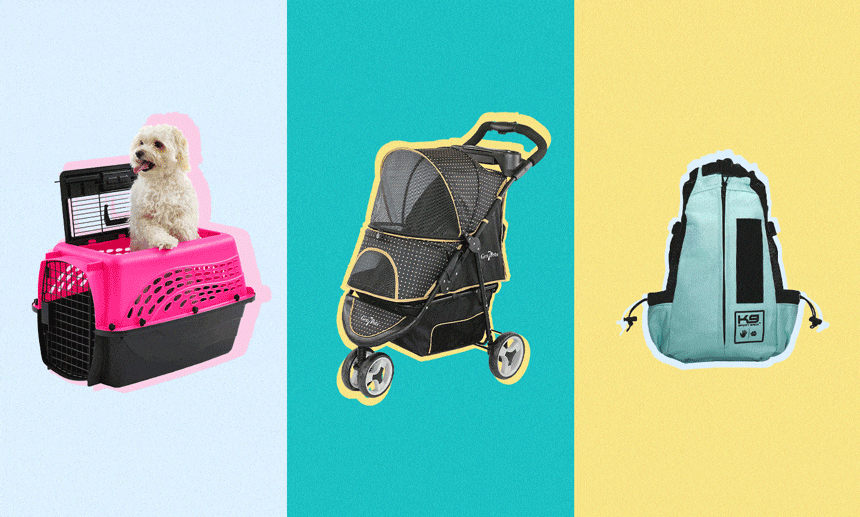
Photo by Chewy Studios
You might think that a dog carrier only comes out when you’re heading for vacation and bringing your pup along on the plane. But the best dog carrier is the one you can use almost anywhere, even at home.
“Carriers provide a really good management strategy to safely contain your pet when you can’t directly supervise them,” says Mikkel Becker, a certified trainer, dog behavior consultant and the lead animal trainer for Fear Free Pets.
If, for example, you’ve got an anxious dog or a high-energy door dasher and people are coming over to visit or work around the house, then Becker recommends putting your pup in the carrier. “Giving them their treats or a long-lasting food puzzle to keep them occupied can be a really good strategy for keeping your dog contained,” she explains. It also helps your pet feel safer and calmer.
Carriers are a must-have in the car. “Dogs are one of the top driver distractions that actually lead to automobile accidents,” notes Becker, who is also the coauthor of “From Fearful to Fear Free.” A good dog travel carrier or crate can keep your pup safe in case you slam on the brakes.
Dog carriers are also good tools for socializing a puppy who hasn’t had all their shots and needs to stay away from adult dogs, or for taking your pet shopping.
OK, now you know how necessary a dog carrier can be, but how do you know which one to get? We break down the different types and what to consider before you buy so you can be sure to pick the best dog carrier for your canine travel companion.
What to Consider Before Buying a Dog Carrier
The best dog carrier for your pet depends on the several factors. Here’s what you need to ask yourself as you shop around for one.
- What are you using it for? Different carriers work better for different types of travel:
- “If you’re just looking for something that’s all around go-to—that’s going to work for airline, for the train, and for the car—that would be where I’d probably opt more for a hard-sided dog travel kennel,” says Becker. “They’re sturdier options that are going to hold up to rougher movement and jarring or squishing that would potentially happen in a soft-sided carrier.” They’re also required on planes if you’ve got a big dog that’s traveling in cargo.
- If you plan to take your dog on outings and adventures, you might need a dog carrier backpack or a sling, which are easier to carry (no hands!) and more comfortable for you, especially if you’re navigating rough terrain while hiking or sight-seeing for a few hours.
- If you’ve got a small dog, maybe all you need is a soft-sided dog carrier bag that you can sling over your shoulder, no matter where you’re headed.
- How large is the carrier? Of course, you want to look at the weight and height requirements first to see if your dog is too big for the dog carrier of your dreams. But think about your dog’s comfort too. “You want the carrier or crate to be large enough so your dog is able to stand up easily and turn around fully, but you don’t want it much larger than that,” Becker explains. That’s because dogs look upon their carriers as their den spaces that help them feel comfy and secure, Becker adds. Another risk to super-sizing: Pups who are being house-trained have an instinct to keep their own space clean, says Becker. “If you have too much room that’s when you’re going to have more house-training accidents.” The best dog carrier is the one that’s big enough to let your dog lie down comfortably and sit up somewhat but not so big that your dog can go potty in there.
- What are your dog’s needs? Here’s where you take your pup’s personality into account. “If you have an escape artist dog, you’d want to use more of a hard-sided carrier,” says Becker—some dogs are good at using their claws or teeth to pull the zipper open in a soft-sided one. Social butterflies will really enjoy being in a dog carrier sling or dog backpack so they can check out what’s going on and interact with you and anyone else around them, she adds. The opposite is true for shyer and fearful dogs. They need a carrier that has flaps that fold down or sides that have vents but people can’t see in so your reactive pup can hide or snooze, Becker explains. Or get a crate cover and drape it over your dog’s travel kennel.
- Is it easy to put your dog in there? You might want to consider a top-loading dog travel kennel with a front door if you’ve got a pet that’s afraid to go into the carrier on her own. It’s even better if you can remove the top so you can help acclimate your dog to the carrier. “You can just start off with the bottom portion of the carrier and getting them comfortable with that before you add on the top,” says Becker. “So that would be a good option if you’ve got a sensitive dog and you’re training them to go into that area.”
- What’s it made of? Flat-nosed dogs like Pugs and Frenchies, as well as older or more overweight dogs, tend to overheat easily in the summer. So be sure that their ride has good air vents and is made of a mesh or other breathable material that doesn’t trap heat, recommends Becker.
- Can your dog be restrained? When you’re carrying your dog around in a dog sling or backpack, where your dog can look out and see the sights, make sure it has a good restraint, says Becker. “A leash attachment that you can hook right to their harness so it’s not going to choke them, but it will keep them contained and also has a good zip,” she recommends. The last thing you need is your dog hopping off to chase a squirrel!
Types of Dog Travel Carriers
Now that you know what to look for, read on for the lowdown on all the different types and which one may suit your furry family member the best.
Dog Carrier Backpack
If you are a sporty pet parent who loves to hike and your dog just can’t keep up, consider a dog carrier backpack, like the K9 Sport Sack dog carrier backpack. They’re a great hands-free way to carry your (small) pet. These dog carriers are also useful for toting your pup around the city when the pavement is too hot for their tender paws, says Becker, or to socialize pups who haven’t had all their shots.
Recommended Products
Dog Carrier Sling
These are perfect small dog carriers—you’re essentially carrying your pet the way you would a baby. Dog slings are not only hands-free but also help pups feel really secure, notes Becker. You’ll want one that’s well padded, so it’s comfortable to tote your pup for hours, like the FurryFido Classic Reversible Dog Carrier Sling. Pro tip: Look for ones that have a safety clip to attach to your dog’s harness and keep your dog safe as they look out while you run errands.
Recommended Products
Soft Carrier Bag
You can take dog carrier bags practically everywhere, including planes. And because you can zip it up so your dog’s head isn’t out in the open, these carrier bags are better suited for shyer pups who might feel more exposed in a sling or backpack. Look for ones like the Frisco Premium Dog Carrier Bag that have a removable liner to make clean-up easier, multiple mesh windows for ventilation, and multiple openings for easy access. Bonus: The soft sides allow it to fit nicely in cramped areas, so it’s easy to store too.
Best for: Any small dog, especially shyer pups.
Recommended Products
Dog Travel Crate
Recommended Products
Dog Stroller
Whether you want to take your pet for a walk or shopping, a dog stroller is your best bet. It’s great for puppies, injured dogs or “senior dogs who love to get out, but their body just isn’t able to do what they used to do,” says Becker. Look for ones, like the Gen7PETS Promenade dog stroller, that can zip up to keep your pet secure in crowded places or if your furball needs privacy, but can be partially open if your pup wants to look out and say hi. You also want a durable model that can fold up for easy storage.
Recommended Products
In the end the best dog carrier is the one your dog will feel safest in. To get your pup used to one, “keep it out on a regular basis,” Becker recommends. Also keep it off limits to guests and visitors so your dog doesn’t feel cornered in there. “If they start to feel trapped, that’s when they’re going to start to have a bad association with going into their carrier or crate,” Becker notes, so pair the dog carrier with good things that happen there, like a special toy or treat that’s only comes out when your pup is in their safe spot.
